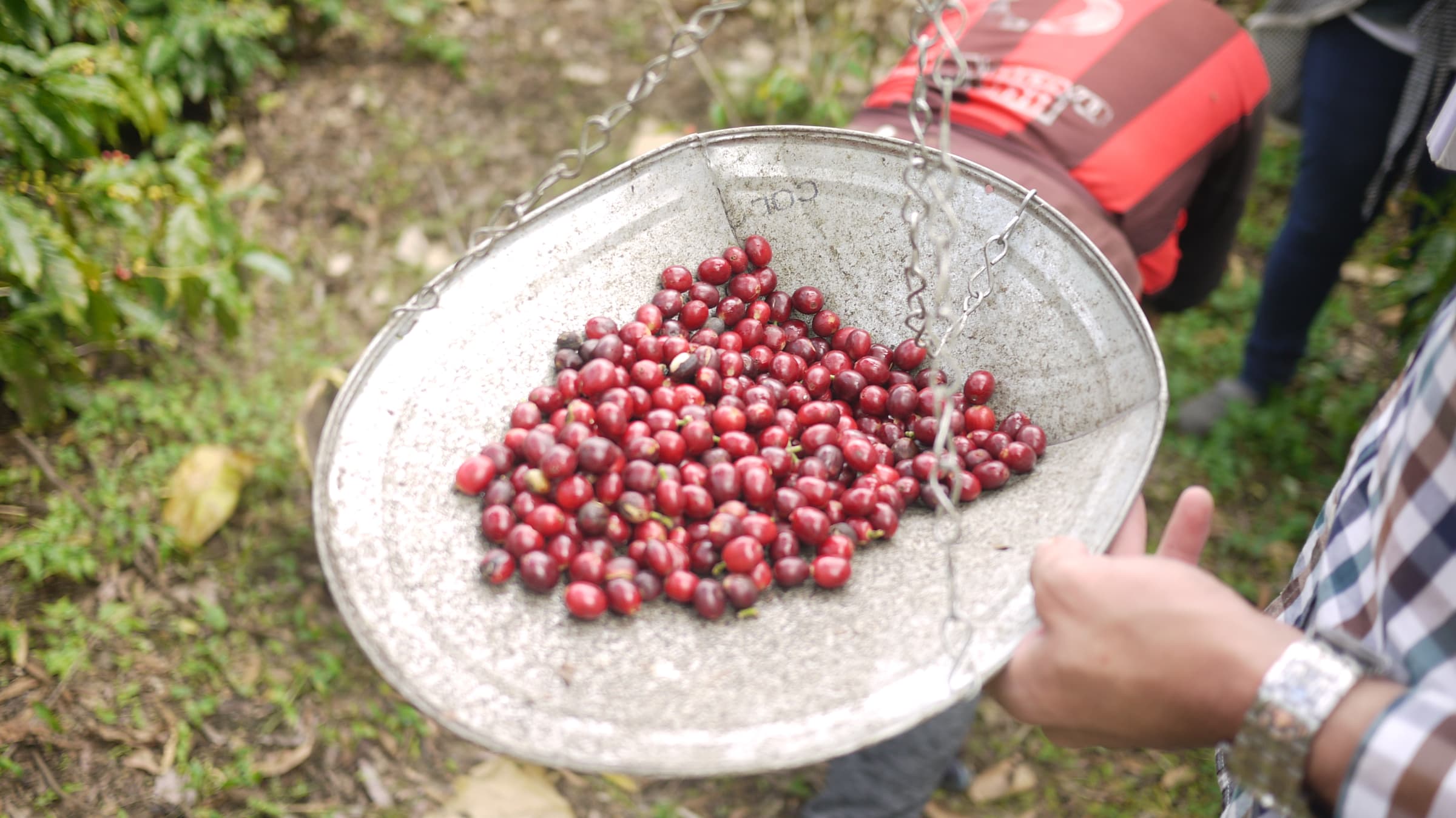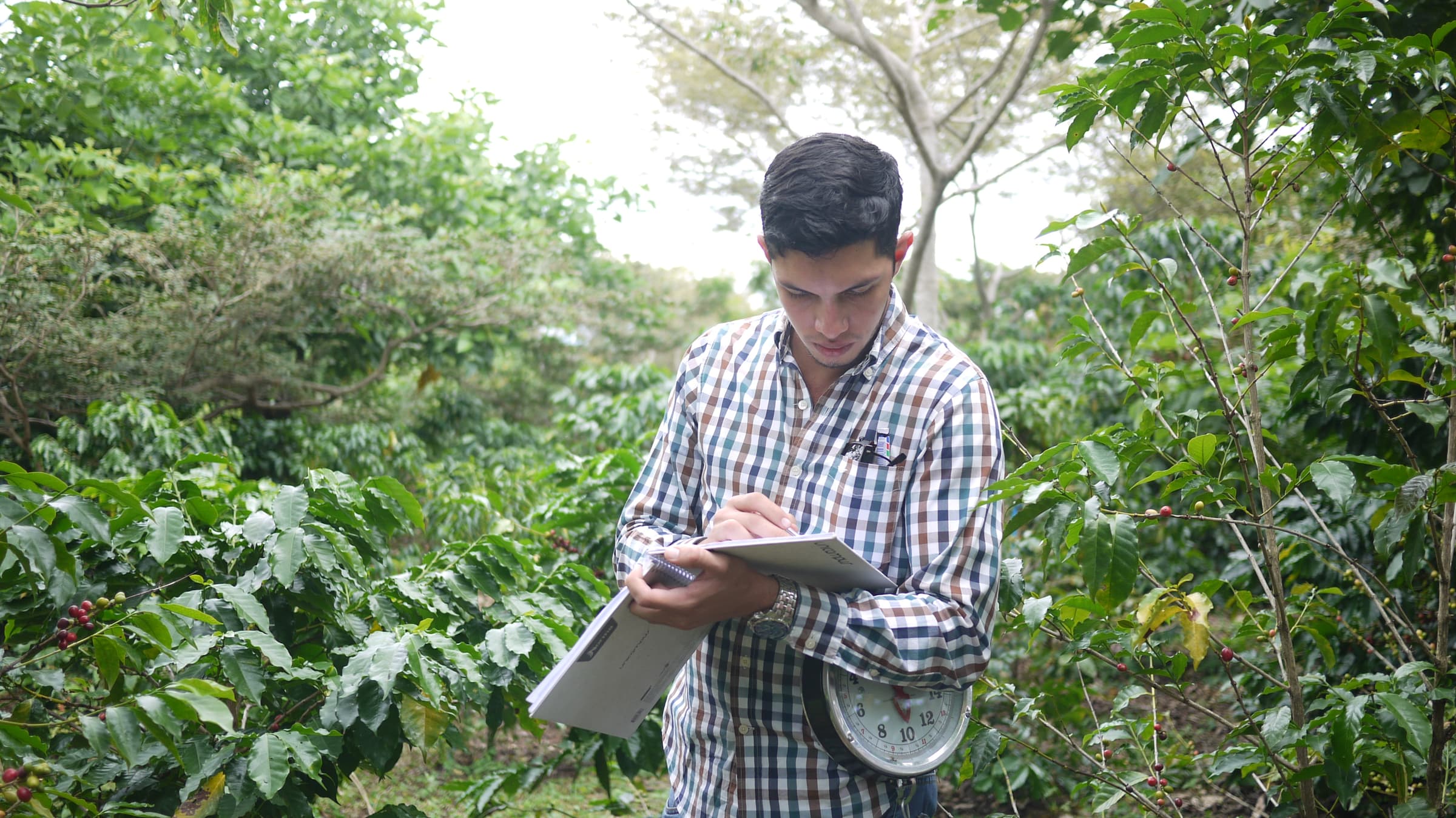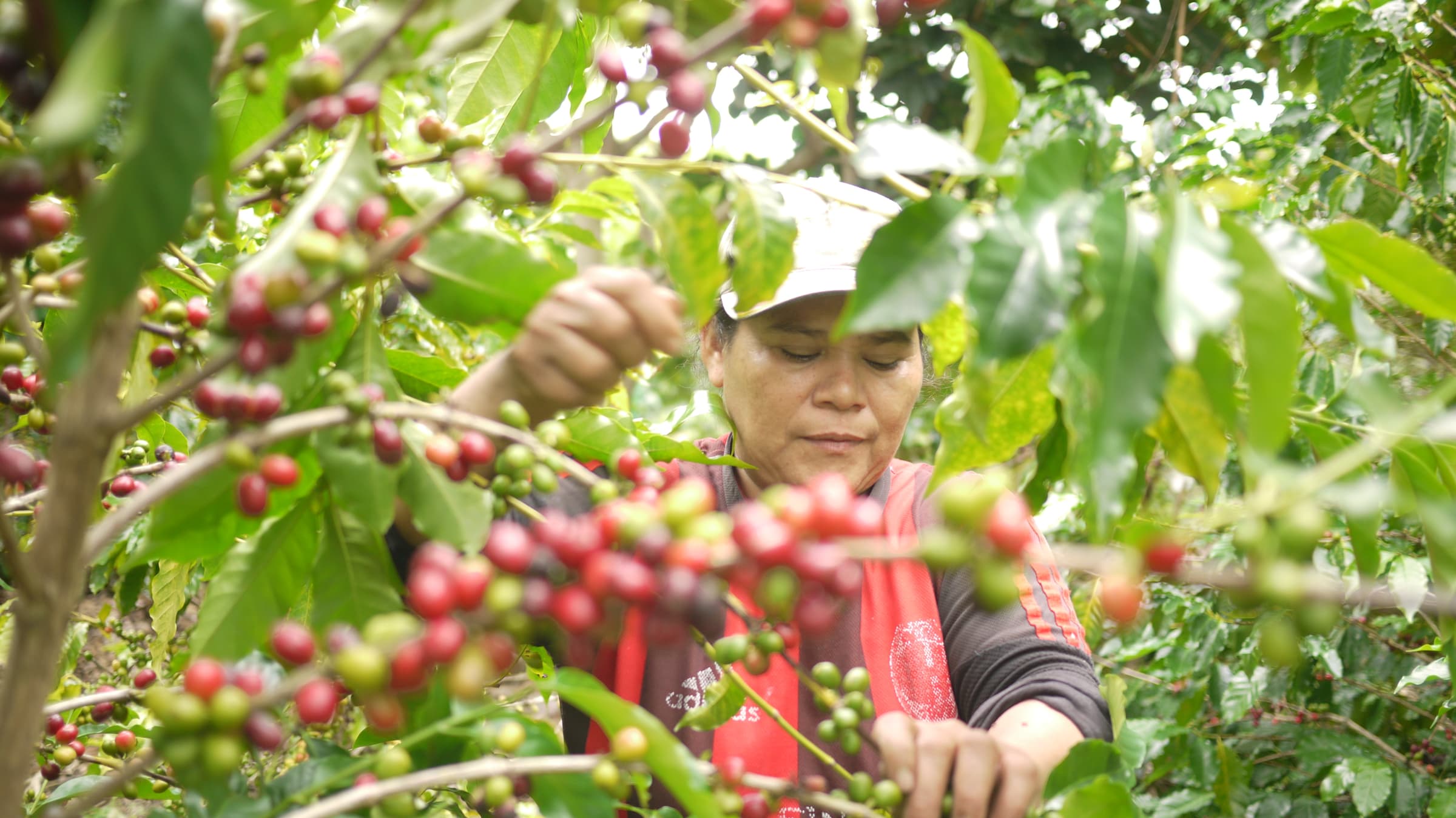Final Four: WCR F1 hybrids complete phase 1 trials
Four high-performing candidates have been identified after 7 years of evaluation

The cherries from a single F1 hybrid cross harvest (the first "production" harvest for these experimental varieties), 2019.
In 2015, WCR initiated a trial to cross high-performing coffee varieties and generate new F1 hybrids aimed at improving productivity, tolerance to disease, improved cup quality, and climate resilience. Seven years later, the first phase of trials is wrapping up and four final candidates have been identified.
Why F1 hybrid breeding?
WCR’s work is dedicated to mitigating risks to coffee supplies in the long term, but various threats, including climate change, have created conditions that challenge the ability of farmers to successfully produce Arabica. Over the next few years, it is projected that climatic shifts and erratic, extreme weather conditions will lead to increased vulnerability of coffee to diseases and pests, reduced quality of coffee, decreased productivity of farms, and increased economic vulnerability of farmers.
F1 (first generation) hybrids are a potential technology that WCR has been exploring to support farmer success and reduce production risk. F1 hybrids are notable because they tend to have significantly higher production than non-hybrids while maintaining high cup quality and disease resistance. Further, compared to traditional varieties, F1 hybrids demonstrate a reduced time from breeding to commercial release (10-20 years vs. 25-30 years for pure line varieties)—which is critical given the pressure farmers face from the climate crisis. F1 hybrid varieties are created by crossing genetically distinct parents (for example, a wild landrace x a modern cultivar). The offspring of the cross are first-generation (F1) hybrids.
In 2015, WCR initiated a trial of 43 F1 hybrid crosses between eight wild Arabicas in the WCR/CATIE Core Collection and three rust-resistant Sarchimor varieties (Obatá, Marsellesa, and IAPAR 59) as well as with Geisha lines.
The hybrids were planted in three locations across Costa Rica and El Salvador between 2016 and 2017, and some were then transferred to the Rwanda Agricultural Board (RAB) Rubona Research Station in 2018. The first production harvest in Central America occurred in 2019, and in 2020, WCR initiated a first round of selection, advancing 15 hybrids for additional observation.

Julio Alvarado, WCR research technician, takes down data about the weight of cherries from an F1 hybrid cross, 2019.
The final four
Now, seven years later, enough data has been collected to evaluate the plants and narrow four finalist candidates. The four finalists were generated from crosses between high performing Geisha and Sarchimor lines.
Mean yield data from four sites shows that the selected hybrids had yields 25% higher than “control” varieties (Marsellesa and IAPAR 59). This is similar to the yield increase seen in other commercially available hybrids, such as Centramericano. WCR 29 produced the highest yield at 30% greater than the yield of Marsellesa (a non-hybrid improved variety that is one of the parents of WCR 29). The data suggests that these F1 hybrid candidates can be competitive in the nascent field of cultivating such plants.
The hybrids’ competitiveness was further supported by quality assessments. During a 2022 cupping at the Specialty Coffee Association’s Expo in Boston, 12 cuppers scored the quality of the four hybrids higher than that of two mother plants—Iapar 59 and Marsellesa—included in the experiment (note: WCR was unable to cup the Geisha parents because yields were too low from selected trees). In sum, 3 of the 4 hybrids averaged an SCA cupping score greater than 84 points. SCA considers coffees that score at 80 points or above as specialty grade.
However, it is important to note that hybrids are not a silver bullet. F1 hybrid plants are more expensive to propagate and often have higher nutritional needs. Additionally, farmers growing F1 hybrids should not save hybrid seeds or the resulting plants will be non-uniform, which can have severe negative consequences for future yields and performance. All of these factors mean that F1 hybrids are not well suited for smallholder farmers unless they have access to high-quality training and technical assistance.

Doña Soila harvests cherries from F1 plants at WCR's research farm, Flor Amarilla, in El Salvador, 2019.
What’s next for the hybrids?
The process to develop a new variety and get it out to farmers is a long one, even for F1 hybrids, and there are no guarantees. Typically, a large number of crosses are made at once and then a few individuals of each cross are planted in the field and evaluated for a minimum of 6 years to see if any of them are promising. It takes roughly 3 years for the tree to produce it’s first production harvest; then a minimum of 3 years of data are needed to verify performance. In most cases, only a few finalists will be selected for advancement based on performance.
Once finalist candidates are selected, they are typically advanced to larger “pre-commercial trials.” These trials test a small number of candidates but plant a larger quantity of each one to see how they really perform in a production environment (compared to a handful of plants at a research station). In total, it can take 12 or more years to properly test new F1 hybrid candidates to see if any offer truly improved performance over what is already available for farmers. And, in the end, sometimes breeders must go back to the drawing board—the outcomes are not known in advance.
In fall 2022, WCR sought partners to host next-phase, pre-commercial hybrid trials for the four finalists. If suitable partners are identified, partners plans to install 6-year trials for final evaluation, starting in 2024. In preparation for potential trials, WCR has engaged CATIE to propagate 12,000 hybrid trees via somatic embryogenesis.
If interested partners are identified and trials proceed—and any F1 hybrid candidates perform well in pre-commercial trials—partners could decide to commercialize the trees. Then, they would join a small handful of F1 hybrid varieties that have only recently become available to farmers. Commercial availability of F1 hybrid varieties is currently limited to a few countries in Latin America (varieties include Centroamericano, Mundo Maya, Starmaya, Milenio, Eva Luna), as well as Kenya (Ruiru 11). Even so, the popularity of F1 hybrids continues to grow because of their higher overall performance.
Dr. Tania Humphrey, WCR’s Director of Research and Development (R&D), looks forward to learning more about the hybrids’ potential in the field and the cup. “I am impressed by the performance of these hybrids in trials so far and excited that we are now ready to scale up to the next stage,” said Dr. Humphrey, “Pre-commercial trials will allow us to better understand their performance and provide traders and farmers with greeted confidence as they consider adopting new varieties.”